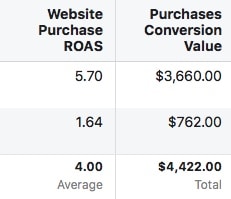Return On Ad Spend (ROAS), is the most important metric to monitor when you are running a digital fundraising campaign on Facebook. But you could be forgiven for not knowing it was there.

Hidden away in the Facebook Ads Manager reporting is the ability to turn on custom columns, where you can add in a whole raft of different metrics apart from the default ones that Facebook shows you.
So what is ROAS? Well, if your ROAS is equal to 1, you have broken even (this is OK). If it’s over 1, you have made a profit (this is GOOD). Most importantly, if it’s less than 1, you have lost money (this is BAD).
The key to running a successful campaign on Facebook Ads is to structure your campaign(s) correctly, monitor it throughout, and intervene to optimise.
What’s the right structure? ONE campaign per objective (e.g. Conversions, Traffic, or Engagement), ONE ad set per audience (e.g. Active Donors, Lapsed Donors, Facebook fans, Interest groups and demographics), and THREE to FIVE Ads per ad set with variations in creative.
It is inevitable that some Ads will have positive ROAS, and some will have negative ROAS. Some Ad Sets will also have variations in ROAS. The key is to give your ads several days to gather enough data, then start turning off the parts of your campaign that aren’t working.
When you turn off an Ad Set that isn’t working, Facebook will spend the remaining budget on the Ad Sets that are working for you, and generate a better ROAS for you overall.



